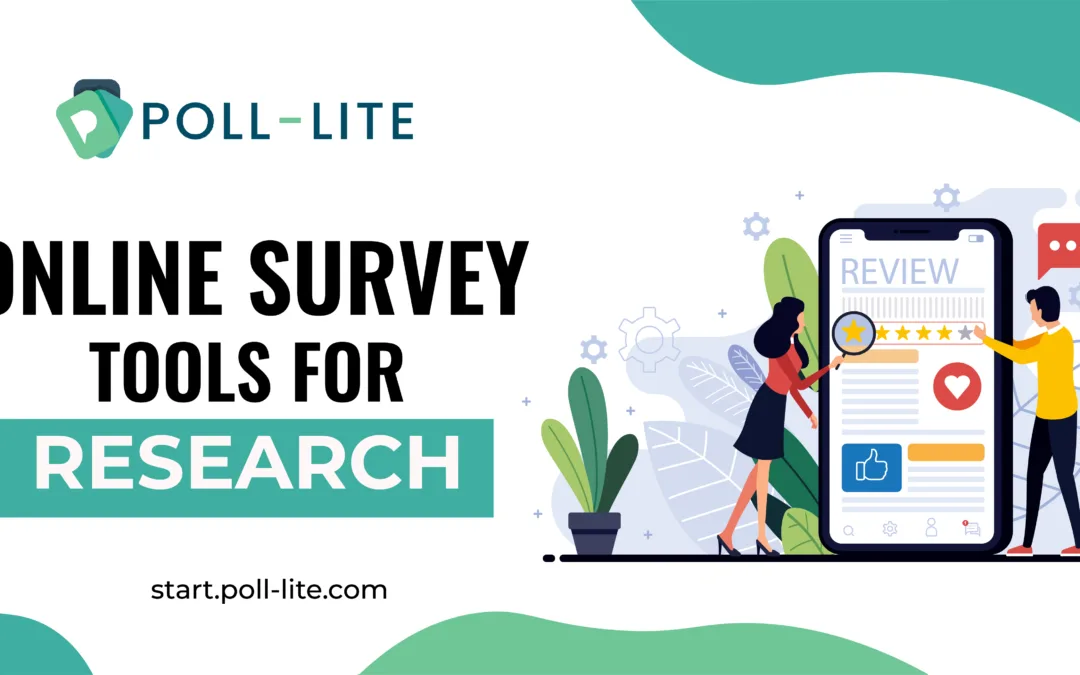User experience (UX) surveys are invaluable tools for businesses and researchers alike. They provide insights into how users interact with products or services, helping to identify areas for improvement and inform future decisions. With the advent of online survey tools, conducting UX surveys has become more accessible and efficient than ever before. In this guide, we’ll explore seven steps to effectively conduct user experience surveys using online survey tools for research purposes.

Step 1: Define Your Objectives
Before embarking on survey creation, it’s crucial to precisely outline your objectives. What specific aspects of user experience are you interested in exploring? Are you seeking feedback on usability, satisfaction, or both? Define your research questions and objectives to ensure that your survey will provide actionable insights.
Step 2: Select an Online Survey Tool
There are numerous online survey tools available, each offering different features and functionalities. Choose a tool that aligns with your research objectives and budget. Look for features such as customizable survey templates, response tracking, and data analysis capabilities. Popular options include SurveyMonkey, Google Forms, and Typeform, among others.
Step 3: Design Your Survey
With your objectives in mind and a survey tool selected, it’s time to design your survey. Start by crafting clear and concise questions that address your research objectives.
Incorporate a variety of question formats such as multiple choice, rating scales, and open-ended inquiries to capture a wide range of feedback. Ensure that the survey is visually appealing and easy to navigate to encourage participation.
Step 4: Pilot Test Your Survey
Before launching your survey to a wider audience with best online survey tools for research, pilot test it with a small group of participants. This step allows you to identify any potential issues with question wording, survey flow, or technical glitches. Solicit feedback from pilot testers to refine and improve the survey before making it available to your target audience.
Step 5: Distribute Your Survey
Once you’re confident in the survey’s design, it’s time to distribute it to your target audience. Utilize the distribution channels that best reach your desired demographic, whether it’s through email, social media, or website embeds. Clearly communicate the purpose of the survey and provide instructions for participation to maximize response rates.
Step 6: Analyze the Results
As responses begin to roll in, it’s important to analyze the data systematically. Most online survey tools offer built-in analytics features that allow you to visualize and interpret the results. Look for trends and patterns in the data, paying close attention to any areas of concern or opportunities for improvement. Consider segmenting the data by demographic variables to gain deeper insights into user preferences and behaviors.
Step 7: Take Action Based on Insights
The ultimate goal of conducting user experience surveys is to drive actionable insights. Use the findings from your survey analysis to inform decision-making and drive improvements to your product or service. Whether it’s refining the user interface, addressing common pain points, or introducing new features, prioritize actions that will enhance the overall user experience.
Revolutionize Feedback Collection: Poll-lite – Your Ultimate Survey Platform Solution
Poll-lite stands out as the best online survey platform, offering a comprehensive solution for collecting valuable feedback from customers. With its light, seamless, and anonymous interface, Poll-lite prioritizes the user experience, making it easy and interactive for customers to leave feedback. One of its standout features is the ability to collect feedback offline and online, ensuring accessibility regardless of the user’s location or internet connectivity.
Unlike other survey platforms, Poll-lite emphasizes anonymity, requiring no personal data from respondents. This not only promotes candid feedback but also alleviates privacy concerns, fostering trust between businesses and their customers. Additionally, Poll-lite’s intuitive design minimizes distractions, allowing users to provide feedback on the go without interrupting their daily activities.
Poll-lite goes beyond traditional survey methods by incorporating innovative technologies such as NFC and swiping, creating a memorable experience for respondents. These interactive features not only enhance engagement but also provide deeper insights into customer preferences and behaviors.
For businesses, Poll-lite offers a robust online dashboard equipped with advanced analytics, including Net Promoter Score (NPS) and audience insights. This allows businesses to track survey completion rates, analyze responses, and identify trends in real-time. Moreover, Poll-lite leverages artificial intelligence (AI) to generate questions and curate surveys based on audience behavior, ensuring relevance and maximizing response rates.
With Poll-lite, collecting and analyzing consumer feedback has never been easier. Its fully self-serviced platform empowers businesses to create custom surveys and polls effortlessly, supported by AI capabilities. Whether collecting feedback online or offline, Poll-lite provides businesses with the tools they need to make informed decisions and improve the overall customer experience.

Conclusion
Conducting user experience surveys with online survey tools for research can provide valuable insights for businesses and researchers. By following these seven steps – defining objectives, selecting a survey tool, designing the survey, pilot testing, distributing, analyzing results, and taking action – you can effectively gather feedback and drive continuous improvement. Embrace the power of user feedback to optimize your products and services for enhanced user satisfaction and success.

